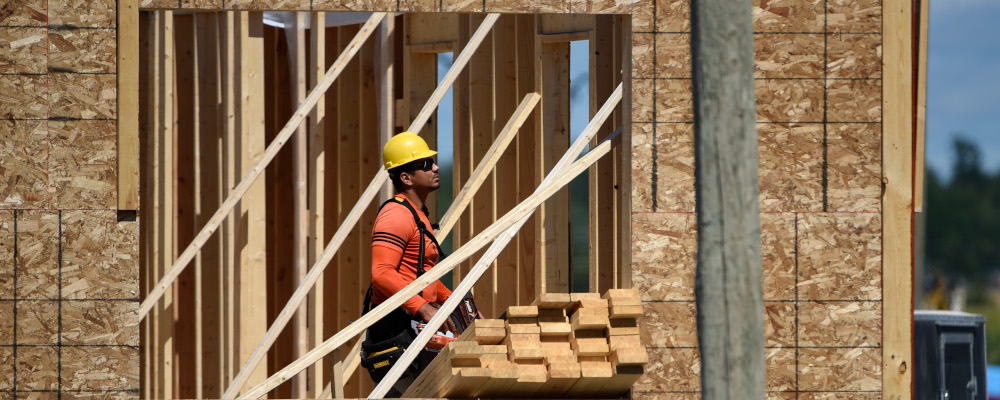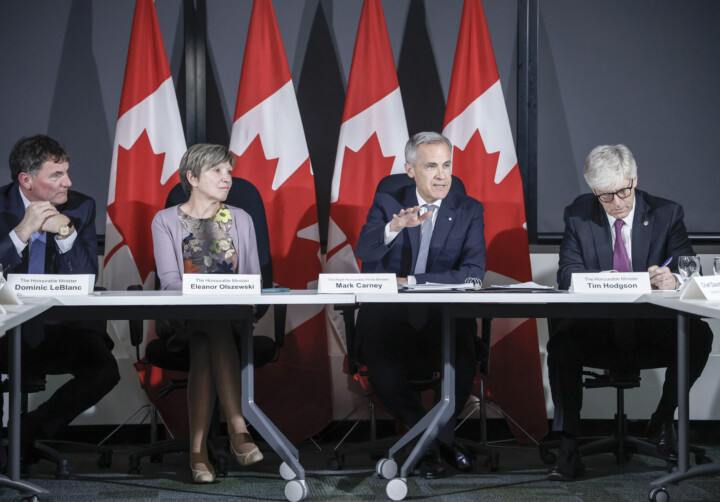It’s no secret that Southern Ontario has a shortage of housing units. Scotiabank estimated that Canada has the lowest number of housing units per 1000 residents in the G7,Estimating the Structural Housing Shortage in Canada: Are We 100 Thousand or Nearly 2 Million Units Short? https://www.scotiabank.com/ca/en/about/economics/economics-publications/post.other-publications.housing.housing-note.housing-note–may-12-2021-.html and the Toronto Census Metropolitan Area (CMA) has the lowest number in Canada. The Ontario government’s Housing Affordability Task Force recently recommended that the province double annual housing construction to build 1.5 million new homes in the province over the next decade.Report of the Ontario Housing Affordability Task Force https://files.ontario.ca/mmah-housing-affordability-task-force-report-en-2022-02-07-v2.pdf With the provincial election in the rearview mirror, Premier Ford has a mandate to meet this goal.
Given that there is widespread agreement on the problem, one might expect some urgency in allowing more housing starts. Unfortunately, a new CMHC report shows that Toronto lags behind other large Canadian cities in terms of housing starts.Housing Supply Report: Canadian Metropolitan Areas https://assets.cmhc-schl.gc.ca/sites/cmhc/professional/housing-markets-data-and-research/market-reports/housing-supply-report/housing-supply-report-2022-05-en.pdf?rev=e66a4117-594f-4b3e-8477-c33fbe1e7766 In 2021, Vancouver led the country’s large CMAs with 93 housing starts per 10,000. Ottawa came in second at 84, followed by Edmonton and Calgary at 78. Toronto came in with a paltry 54 units per 10,000. This isn’t a new development. Toronto has been near the bottom of the pack for over a decade. Meanwhile, the average home price in the GTA increased by 23.9 percent from May of 2021 to May of 2022, hitting $1.26 million.
This isn’t just a Toronto problem. Toronto’s housing supply shortage is spilling into parts of Ontario that up until recently were relatively affordable. For example, the Canadian Real Estate Association estimated that housing prices in Tillsonburg increased 22.6 percent between May 2021 and May 2022 to $671,800. Similarly, Woodstock-Ingersoll saw prices increase 18.6 percent over that period to $786,800. For context, those prices are in the same ballpark as a detached house in Miami when factoring in the exchange rate.
It’s clear that we need more housing units not just in Toronto, but throughout Southern Ontario. The question is, where can those incremental new housing units be built? Building an additional 750,000 on top of the 750,000 that would be built at the current pace will require some concessions somewhere. It’s already a battle to build at our current pace, with zoning restricting density even in urban areas and red tape slowing approvals. Moreover, we’re running out of places to build detached houses unless we open up more of the Greenbelt to development. So the provincial government has difficult choices to make.
Seven hundred and fifty thousand homes is not a trivial number. If we were to plunk those units all down in one place, it would be the second-largest metropolitan area in Ontario (the average Ontario household has 2.6 residents, so it would hold nearly two million residentsCensus Profile, 2021 Census of Population https://www12.statcan.gc.ca/census-recensement/2021/dp-pd/prof/details/page.cfm?Lang=E&SearchText=Ontario&DGUIDlist=2021A000235&GENDERlist=1,2,3&STATISTIClist=1&HEADERlist=0). Obviously, we’re not going to build a new, large city from scratch. We could also develop a dozen new Miltons. Milton added just over 57,000 residents between 2011 and 2021. Or we could find room for 18 to 20 condo megaprojects like the 40,000 unit project in York Region recently greenlighted by the Ford government. While I can’t pronounce on the viability of either approach, there is reason for skepticism. Either approach depends on having the right infrastructure available (sufficient highway capacity, or a major transit hub, respectively) and a tolerance to allow large-scale developments that, to be blunt, tend not to be popular.
Of course, there is a simpler path: the Ford government can follow the Housing Affordability Task Force recommendation to allow four units “as of right” per residential lot. While this kind of small-scale development seems trivial, it can add up quickly. Increasing density in the City of Toronto by ten percent would lead to around 116,000 new dwellings. While that might sound like a lot of people to pack into Toronto’s existing borders, it would only make Toronto about as dense as Montreal. Well short of Vancouver or Boston, let alone San Francisco or New York. More than half of occupied dwellings in Toronto are in buildings under five stories tall and around 40 percent are detached or semi-detached houses or row houses. So there is plenty of room for incremental density.
If we were to take that approach across the province, it would result in roughly 550,000 new occupied dwellings. While it is true that housing demand is not as voracious in Northern or Eastern Ontario as it is in the GTA, this nevertheless highlights that allowing more “gentle density” can add up to a lot of new units. That doesn’t get us all the way to 750,000 units—and it is on top of the 750,000 we’re on pace to build—but it would be a very healthy start.
But adding incremental density is difficult, absent zoning changes. Around 70 percent of land in the City of Toronto is restricted to single-detached or semi-detached homes. That doesn’t leave a lot of room to add new housing units within existing boundaries, given that most of the city is already built out. Allowing for the conversion of single-detached houses to up to four units could meaningfully increase the capacity to build housing in Toronto.
The politics of densifying existing neighbourhoods are challenging. There is always a reason for existing residents to oppose new development. Noise, shade, traffic. These are the kind of tradeoffs that come with city living. But Ontario wouldn’t be blazing a new trail. Several other North American jurisdictions have overcome these challenges. Cities such as Minneapolis, Portland, and Edmonton have essentially ended exclusionary zoning. The cradle of North American NIMBYism, California, has effectively ended single-family zoning. There’s no reason the same couldn’t be done for Toronto and other Ontario cities.
While many of the most desirable neighbourhoods in the entire country are in older corners of Toronto where detached housing is the exception, rather than the rule, densification sounds scary to some. But we should be far more afraid of Southern Ontario becoming permanently unaffordable for young people. Long-standing homeowners who don’t like the changes can take solace in the home equity they’ve built as a result of those changes. It sounds harsh, but if we’re choosing between allowing Toronto to become a dynamic global city where young people can afford to live or a playground for the wealthy, the choice shouldn’t be that hard.
Of course, one might argue that the lack of housing in Toronto and other Ontario communities is created by local governments. So shouldn’t they be solved by local governments? The trouble is that city councils have little incentive to allow more housing. After all, prospective residents don’t have a say in whether a building gets built, even if they live one town over; but the neighbours do. So even minor inconveniences can trump needed housing.
While there is a healthy, ongoing debate about whether upper levels of government should intervene in local housing policies (see the recent exchange between Sean Speer and Ken Boessenkool in these pages), it doesn’t appear likely that any substantive zoning changes are coming from the City of Toronto in the near future. No one seems to want to run for council, let alone challenge the incumbent mayor, so it’s hard to see a catalyst for change at the local level despite the urgency of building more housing.
The provincial government represents the whole province, so it is better placed to make decisions that are in the interest of all Ontarians rather than individual municipalities. Given that Premier Ford just won a majority government in an election where every major party ran on meeting the Housing Task Force goal of 1.5 million new homes in the next decade, he has a mandate from Ontarians to ensure that goal is met. That means making the tough zoning decisions that city councils won’t.
Ontario needs more housing. Particularly in Toronto. Ontario voters have handed Premier Ford a mandate to ensure that 1.5 million new homes are built over the next decade—a goal agreed upon by every major party in Ontario. Doubling the rate of home construction will not be easy. But adopting the Housing Affordability Task Force’s recommendation to allow more zoning flexibility would be a big step toward meeting that goal.
Recommended for You

The Alberta-Ottawa energy agreement sounds impressive—but how excited should we really be?

Canada just took one big step closer to reaching its energy superpower potential

International students jumped 400 percent at Canadian public colleges in last decade: Statistics Canada

‘We need transformation’: The Hunter Prize 2025 winners on the best ways to boost Canada’s economy and increase standards of living



